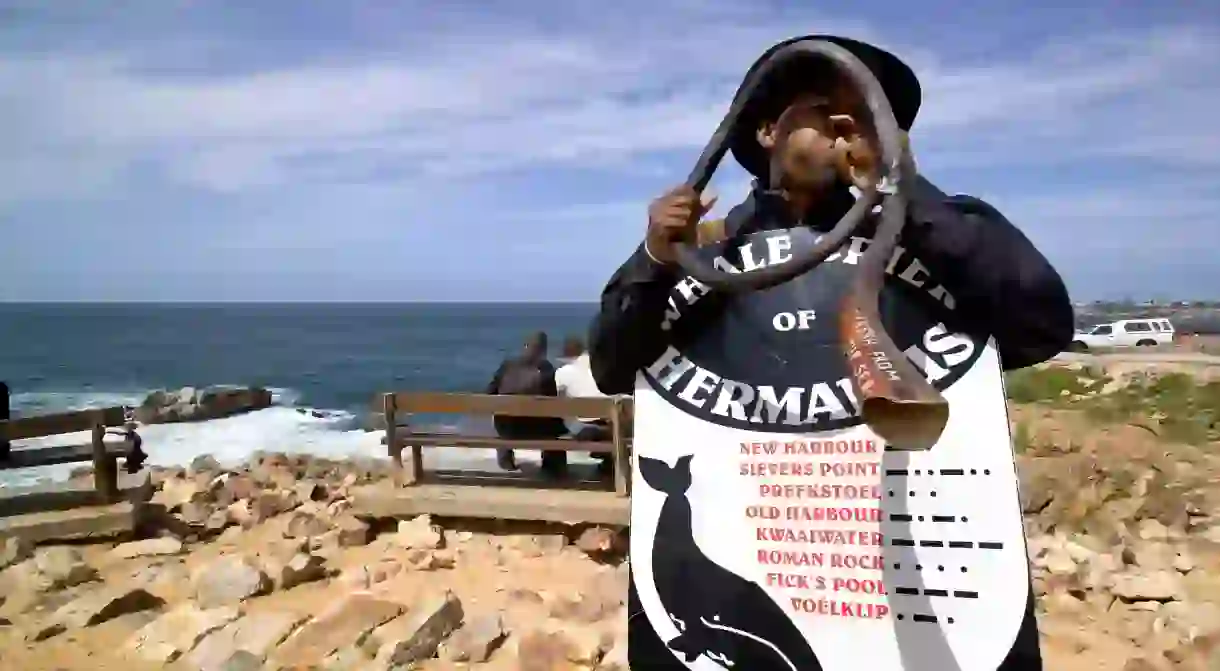Behind the Birth of South Africa's Whale Crier

Hermanus, South Africa’s whale watching capital, is home to the only whale crier in the world. From June to December, his calls echo through the small town.

Each year, hundreds of southern right, humpback and Bryde’s whales journey to the calm and icy waters of Hermanus to breed and give birth. Whales can be spotted from all angles, and with them come streams of avid tourists, eagerly waiting for the next photo op. A deep call vibrates through the town, as the famous whale crier blows on his kelp horn to alert these excited visitors that whales are nearby.

A tradition emerged
What started as a publicity stunt has become a true tradition in the town and today, the whale crier is synonymous with whale sightings.
The idea of the whale crier was introduced to Hermanus in 1991 to attract more visitors to the bay, and in August 1992 the first horn was blown. Pieter Claasen held the title for years and gained international recognition when he was invited as the guest of honour at the Annual Town Criers Competition in Topsham, United Kingdom. Although town criers are, or at least used to be, common in the UK, this was a first for South Africa.

Where to find the whale crier
When Pieter retired, he was succeeded by Wilson Salukazana, and after him Godleck Baleni stepped in. Today, Bravo Sobazile carries the title and is seen all over town, especially on the cliff’s edge near the quaint Old Harbour.
Spotting the whale crier is no difficult feat; he carries a large sandwich board donning the words ‘Welcome to the best land-based whale watching in the world!’ And that is exactly what you’ll experience on your visit: tons of marine life, with the call of the whale crier’s kelp horn heard every few minutes.














